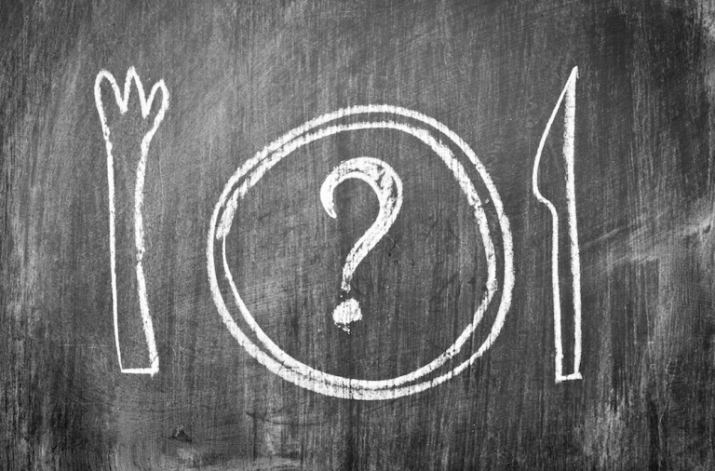“How much should I eat?” Here’s a helpful guide for daily caloric intake
Whether you’re a professional bodybuilder or a new mother just trying to lose the baby weight, it’s important to manage how much you eat – It’s a no-brainer. Without going into too much detail over macro-nutrients and all that jazz, let’s just talk about something everybody has heard of – calories.

Here’s the big secret behind losing weight
Are you ready?
Consume less calories than you “burn.”
The opposite rule goes for gaining weight. It’s that simple. How do you know how many calories you “burn” throughout the day? I’m glad you asked.
Step 1: Calculate Basal Metabolic Rate
To quote an excerpt from Christian Thibaudeau’s article on Carb Cycling: “Your basal metabolic rate (BMR) simply means the amount of energy used by your body during a 24 hour period if no activity is performed.”
BMR differs from person to person depending on age, sex, and overall size. Of course a 250 pound power lifter needs to eat more than a 120 pound ballerina.
To determine our BMR we can use the Harris-Benedict equation:
MEN:
66 + (13.7 x weight in kg) + (5 x height in cm) – (6.8 x age)
WOMEN:
655 + (9.6 x weight in kg) + (1.7 x height in cm) – (4.7 x age)
You COULD do that. OR you could just use this handy calculator.
Here’s a couple examples. Let’s talk about that new mother again.
- She’s 5’6
- weighs 150 lbs
- 28 years old
We enter that information into the calculator and violá! Her BMR is 1486 calories per day.
How about a high school linebacker trying to put on some mass the summer before his senior year?
- He’s 6’2
- weights 195 lbs
- His BMR would be 2105 calories per day.
Now, remember, these numbers are assuming that both of our examples don’t engage in ANY sort of physical activity throughout the day, which is simply not true. People are constantly using energy, but some are more than others. This brings us to the next part of our calculation.
Step 2: Determine Activity Level
To finish off our daily caloric intake, we have a set of multipliers to use on our BMR.
- Sedentary, very little exercise = BMR x 1.2
- Non physical job, moderate daily activity, little exercise = BMR x 1.4
- Non physical job, daily activity, daily exercise = BMR x 1.6
- Physical job, daily activity, daily exercise = BMR x 1.8
- Highly physical job, daily heavy exercise = BMR 2.0
Let’s consider our examples again.
Let’s say the mother works from home, but is constantly up and about taking care of the baby. Her multiplier would be 1.4 x her BMR which comes out to be 2080 calories per day.
Perhaps our football player not only has football practice every day, but he also works nights at a warehouse lifting heavy metal piping all evening long. His multiplier would be 2.0 x his BMR so he needs 4210 calories a day! And that’s just to maintain his current weight.
Just as a recap:
So far we have our stay at home mother eating 2080 calories a day and our football player eating 4210 calories a day in order to maintain their current body weights. We will call these maintenance calories.
Let’s apply this information in order to accomplish…
Step 3: Losing/Gaining Weight
It should go without saying that in order to gain weight or lose weight, one must simply eat more or less than their maintenance calories, but just how much more?
A good number that tends to work well with most people is a 20% increase or decrease in maintenance calories.
For our stay at home mother who wants to lose weight, she would consume:
2080 – (0.2 x 2080) = 1664 calories
And for our football player who wants to gain weight, he would consume a whopping:
4210 + (0.2 x 4210) = 5052 calories
Wrap Up:
There you have it – a very simplified way of determining daily caloric intake depending on your goals. Keep in mind, however, that the calories you consume need to be good, wholesome foods. Eating a bunch of “dead” calories is not going to help you accomplish anything. It’s also important to have a balance of protein, carbohydrates, and good fats. But that’s for a different article.
Keep track of your daily caloric intake
If you’re wondering how to keep track of your daily caloric intake, I highly recommend an app called MyFitnessPal. I know it can be a pain constantly logging your food, but at least try it for a week or two just so you have an idea of what you eat on a regular basis. Also, you will tend to not eat as much “crap” if you are religiously writing down what you consume.
Thanks for reading! I hope you found some of the information here useful.
Corum



